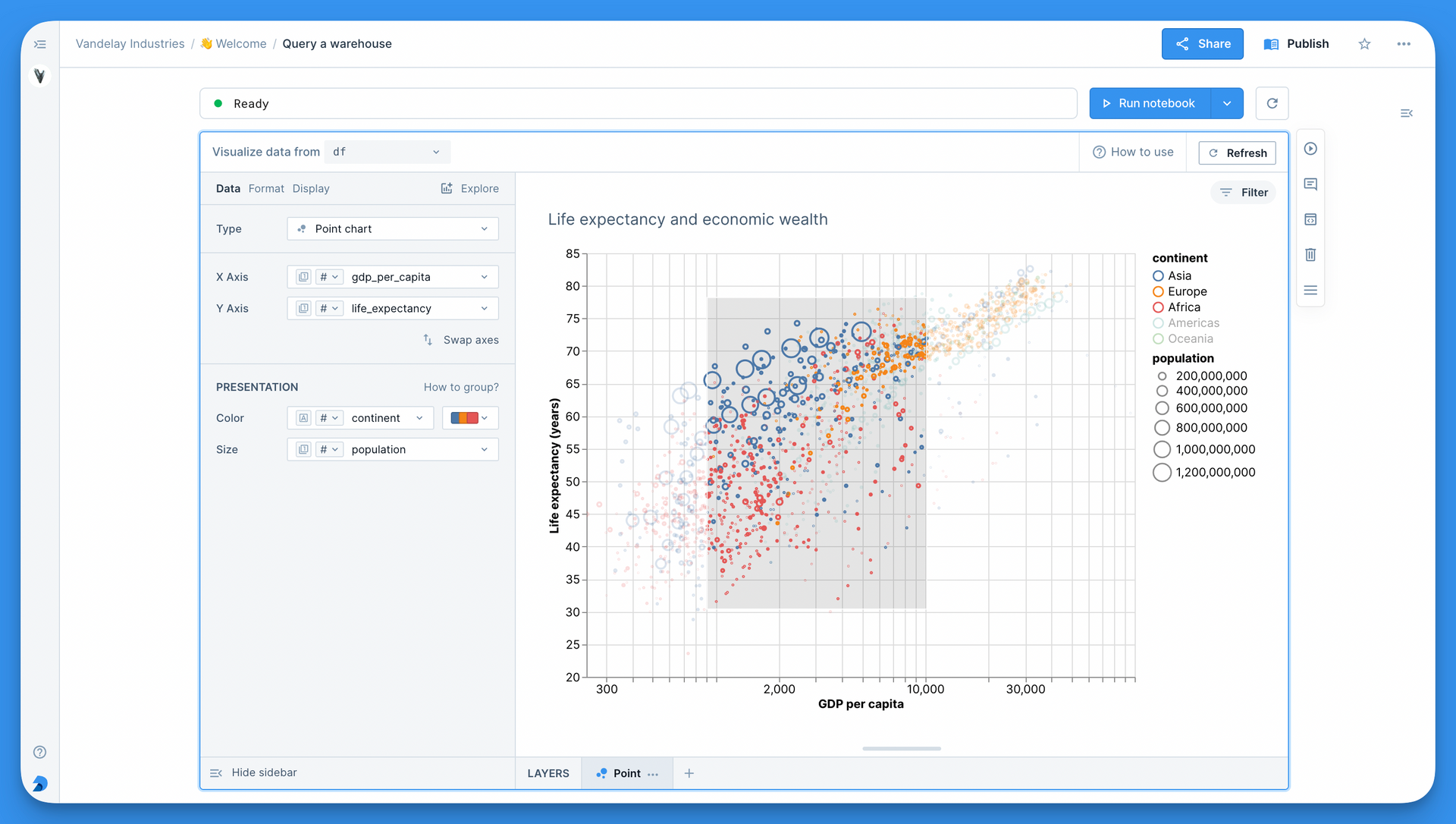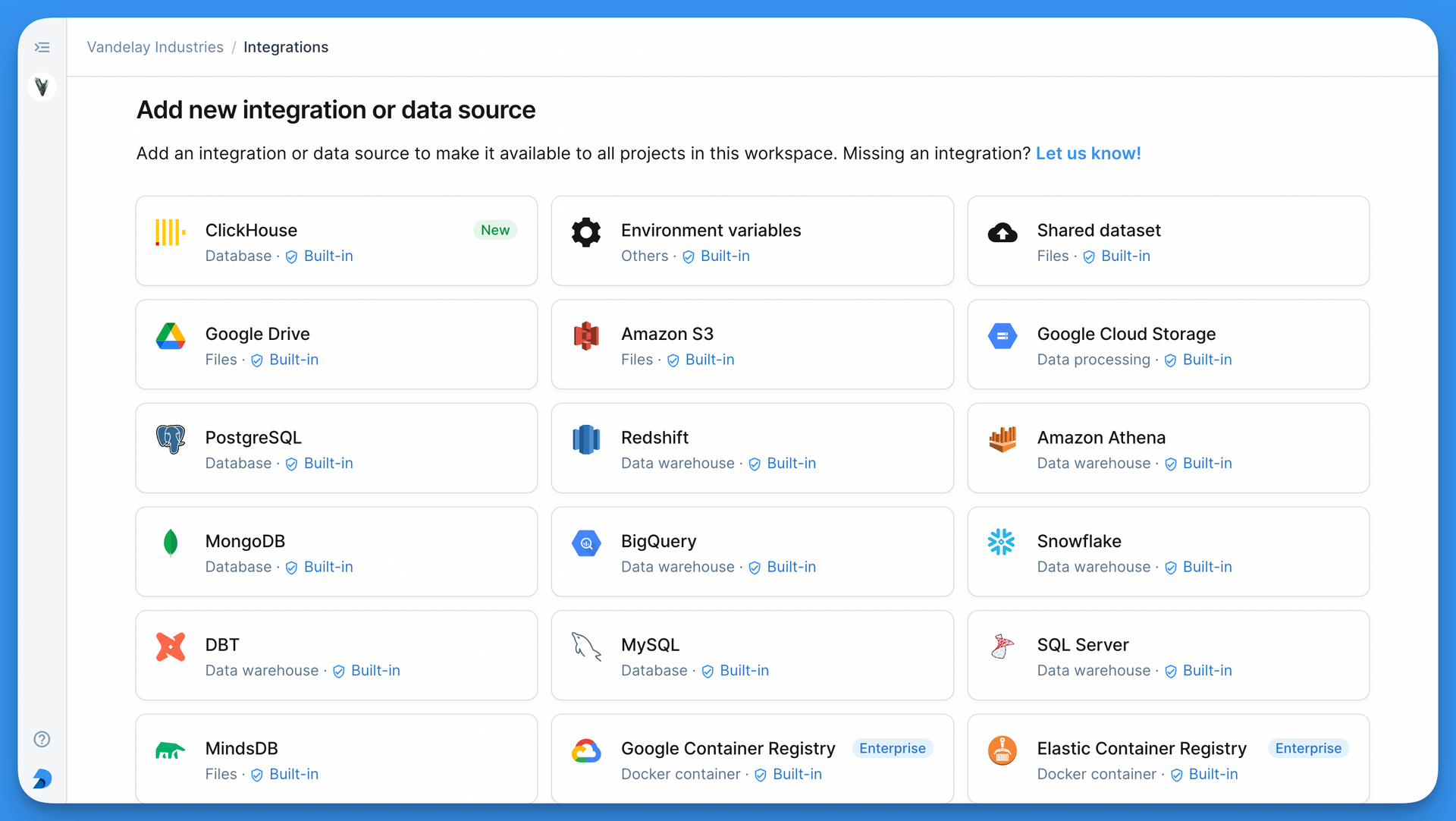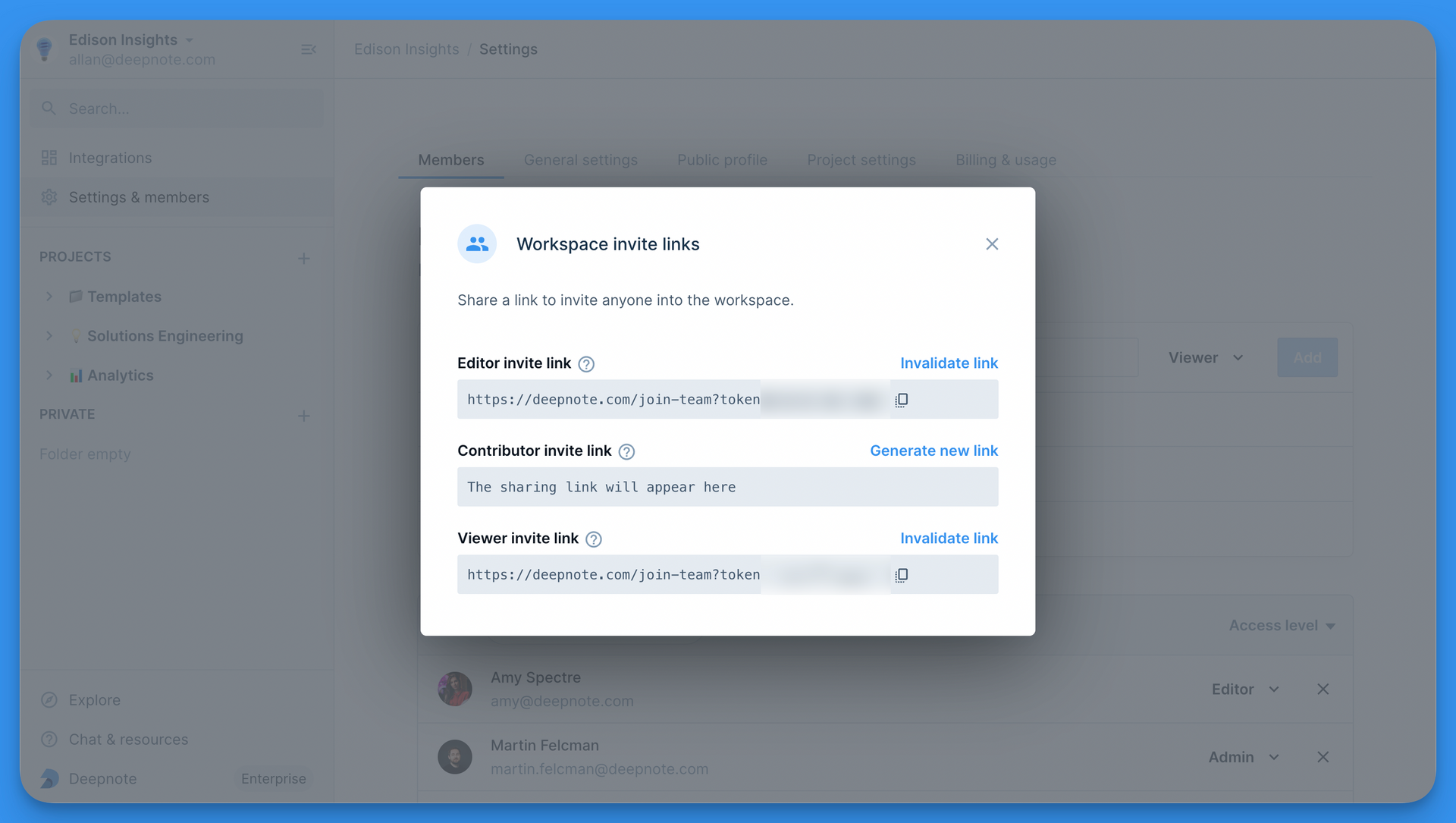From ingestion to analysis, the modern data stack is made up of a massive amount of technologies. Figuring out how to make them all play nice together — not to mention optimizing them for data professionals and commercial goals — is a business-critical puzzle.
And that’s where a data platform team comes in. These are the people responsible for standardizing the data tools companies use, all the way from building and maintaining data warehouses to supplying stakeholders with BI dashboards.
At Ramp — a leading corporate card and finance automation platform — the missing piece to the puzzle centered on exploratory data analysis. The company’s data platform required a standardized tool that would not only act as a research environment for data practitioners, but also help them work faster and more collaboratively.
Learn how Ramp used Deepnote to upgrade its data platform and drive better results.
Building for the builders
Time is money, and Ramp’s mission is to help businesses save both. As America’s fastest-growing corporate card and a top-rated software, the company helps thousands of organizations automate expense management to reduce costs and close books faster.
As a Staff Software Engineer on the Data Platform team, it’s Ryan Delgado’s job to empower the company’s wider data organization and all partner teams with the tools and support they need.
“We’re a team of five, and we’re essentially a hybrid data/machine learning engineering and DevOps team,” Delgado said. “We build and maintain the platform that enables Ramp to realize value from data.”
Delgado’s direct stakeholders include professionals in Ramp’s Data and Risk Operations organizations — analytics engineers, data scientists, and managers who are vertically aligned with specific business functions. They’re the experts who build the analytics and data science products that help Ramp make strategic decisions, enhance its product, and manage risk. They need to deliver for various stakeholders across the company, so the company’s data platform needs to deliver for them.
The platform Delgado’s team is responsible for is directly used by up to 40 data professionals each and every week, and indirectly by more than 200 other team members via BI tools.
Data notebooks play a key role, as team members use them to conduct ad hoc analyses, prototype machine learning models, and collaborate with other team members. But the notebooks Ramp was using left much to be desired.
Perfecting the platform
Data notebooks are a key tool in the analytics arsenal, allowing users to run queries, write code, visualize data, and provide written context for results all in one medium. But not all notebooks are created equal.
“Before Deepnote, we were using another tool, but we found that it didn’t quite fit the needs of our users,” Delgado said. “The user experience wasn’t great, and it was impacting productivity.”
Compute environments needed to be provisioned manually for new users. They regularly took five to 10 minutes to spin up. And getting CSV data in and out was difficult. On top of that, team members were wasting too much time creating database connections and managing credentials.
“There were tasks that should be easy but were actually difficult to do, such as moving files in and out of the environment, using Ramp-owned Docker containers, and querying our data warehouse,” Delgado said.
This created a knock-on effect that increased the support burden on the data platform team. Ramp needed a solution that would provide a better out-of-the-box experience for users and free up Delgado’s team to focus on higher-impact work.
“Users had a lot of complaints about the general user experience and hacky workarounds they employed to make things work,” Delgado said. “We weren’t confident that we could make that service work for us, so we explored other options. That’s when we reached out to Deepnote.”
See Deepnote in action in the video below:
Deepnote’s collaborative data notebook fit the bill better than any other option, particularly when it came to speed.
“Boot times for machines were much faster,” Delgado said. “It typically takes 20-30 seconds for a machine to boot in Deepnote, compared to 5-10 minutes in other options.”
And Ramp saw the potential for cost savings in addition to time savings. Previously, teams would have to extend the idle time of their notebooks to prevent shutdowns, which increased compute costs. But since Deepnote restores variables from previous sessions, that unnecessary spending was eliminated. Plus, with built-in billing alerts and limits, Delgado can more easily keep track of compute spend and even disable certain machines from being used if needed.
“The easy things are easy, and even some of the hard things are easy,” Delgado said. “Querying Snowflake, file I/O, using interactive plotting libraries like Altair and Bokeh are all out-of-the-box with Deepnote. And using Docker images, accessing the Bash shell, and new user provisioning are seamless and straightforward.”
Deepnote’s Docker support is an especially powerful feature for Ramp, allowing the company to easily create and duplicate custom environments based on its business needs.
Additionally, Deepnote’s automated version history has made it easier for team members to stay up to date on who’s making changes to different projects and when. With the ability to preview and restore older versions of notebooks, teammates can quickly reproduce each other’s work and revert back to different project states when necessary.
Going from painful to painless
Deepnote is now Ramp’s one-stop shop for exploratory programming, from querying data to creating presentation-ready charts.
“Deepnote provides a best-in-class platform for authoring Jupyter notebooks,” Delgado said. “We use it to query data from Snowflake, create interactive visualizations, and glean insights.”

But unlike Jupyter notebooks, Deepnote is collaborative by design. Team members can share the same execution environment simultaneously to work together in real time, or simply leave comments for one another for asynchronous collaboration. Notebooks can be organized into folders within searchable workspaces, making it easy for teammates to find, access, and reproduce projects.
And since integrations can be connected to any project in a workspace and shared among all team members, manually connecting to databases and managing credentials are a thing of the past.

Granular workspace permissions help the team keep projects both accessible and secure. Workspace administrators can grant role-based access to notebooks, such as the ability to view, comment, and edit. And if notebooks ever need to be passed along to business stakeholders, they can be shared with a link or published as an interactive article, dashboard, or app. There’s no need to pass along database credentials or share screenshots with sensitive data.

The ability to centralize where work is being done and increase visibility into it was key for Ramp’s Head of Analytics Engineering & Data Science Ian Macomber. Previously, the company struggled with individuals adding code to the parts of the stack they felt most comfortable with, be it a data warehouse, personal machine, BI tool, or last-mile business logic on the backend.
“Deepnote helps Ramp collaborate in a single plane of code that is accessible across the company,” Macomber said. “The data team had little visibility into the upstream and downstream dependencies that occurred across our wide suite of tools. Deepnote has helped resolve this problem for us.”
The result is happier and more productive data teams, which means a happier and more productive data platform team.
“We are happy with Deepnote because it is a deeply technical and powerful tool that is also extremely accessible and intuitive,” Macomber said. “The data platform team has built an area where people can not just do great work, but share great work. Deepnote isn’t just accessible by experienced data scientists, it’s a tool where business analysts can do exploratory work and quickly migrate their ideas to production-grade systems and processes.”
Optimizing and managing a data platform isn’t easy. Companies must find solutions that will keep the majority of people happy, and are also easy to use and maintain. Luckily, Delgado didn’t have to wait long to find out adding Deepnote to the mix was the right choice.
“I knew I’d made the right decision when I started getting feedback from data scientists about how delightful their user experience was,” Delgado said.
With the right tools in place, Ramp’s data organization can focus on doing what it does best: Turning data into business value.
Learn more about Deepnote’s productivity features
Get started for free to see how Deepnote takes the effort out of exploratory data analysis.